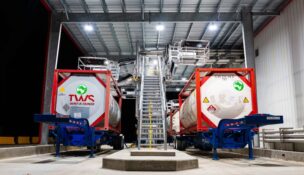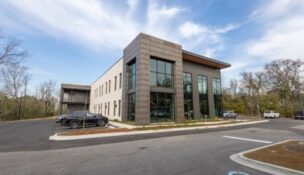We just haven’t kept up’: Report quantifies housing woes
Staff //November 5, 2018//
A new report from the Charleston Metro Chamber of Commerce puts data behind what many Lowcountry residents have known for the past few years: Attainable housing is hard to come by in the Charleston region.
Ian Scott, senior vice president of advocacy at the chamber, said the report uses the word “attainability” rather than “affordability” because the government has definitions of what constitutes affordable housing, which Scott said is important but isn’t what the chamber is trying to address with this report.
.JPG)
The Charleston metro region is growing by 38 people a day, 10 of whom are born here and 28 who move from elsewhere. Many of the migrants are moving from other Southeastern locales, such as Columbia, Greenville, Spartanburg, Charlotte and Atlanta. This results in an average population growth of 2.2% per year.
“It’s truly not an explosion,” Scott said. “We just haven’t kept up with the pace.”
The chamber’s report says 7,500 new housing units each year are needed to keep up with population growth, but the region’s municipalities haven’t issued that many residential building permits since 2006, when a little more than 9,000 permits were issued.
Scott said this is the report’s “most critical data point.”
“At its core, we have fundamental supply-and-demand problem, and that’s what’s pushing those housing and rent prices up,” he said.
Past pre-recession levels
Housing prices and average rents in the Charleston metro area have surpassed pre-recession levels. In 2006, the median home sales price was approximately $200,000; the median in September of this year was $276,500, according to the Charleston Trident Association of Realtors. The average monthly apartment rent in 2006 was slightly less than $800, and close to $1,170 in March, according to multifamily research firm Real Data.
Wages have not increased accordingly; according to the report, housing costs are rising twice as fast as wages. In 2006, according to the Bureau of Labor Statistics, the average annual wage in the Charleston region was $34,370, and in 2017, the average annual wage was $44,970. The chamber’s report said 48% of new households in the region earn less than $50,000, and typical residents spend 57% of their income on transportation and housing costs.
“Earnings are headed in the right direction,” Scott said. “It’s just that they’re outpaced so significantly by the increases in either rent or the cost of purchasing a home that they’re being erased, effectively.”
Between 2015 and 2030, 112,309 housing units will be required across the region. Nearly half of those homes should be priced for households earning $50,000 or less annually, the report says — meaning a sales price between $175,000 and $225,000 or an average monthly rent of approximately $1,200.
“We need stuff in the middle that can help get that price point, naturally get the price point down for families who are looking to get into that first place,” he said. “There are things that can help the market generate those kinds of housing opportunities, but we have to decide we want to grow in that pattern.”
Scott said that kind of growth would probably mean more density, more infill and more vertical construction.
“Every municipality in our region, none of them have a very good efficiency rate in terms of their workforce,” he said. “There aren’t any, actually, that have a majority living and working in that part of the region.”
‘A competitiveness problem’
The housing attainability report came out of the chamber’s housing attainability task force, which is focused on addressing the lack of housing for employers across the region.
“Essentially the employers recognized that part of their talent attraction and retention problem is a housing problem, and this runs across the gamut,” Scott said. “Maybe it’s really well-known and frequently written about regarding hospitality workers on the peninsula, but it’s a bigger problem than just that.”
Erica Taylor, a member of the task force and chief strategy and communications officer for Charleston County School District, said housing is a “critical issue” that needs to be thought about more strategically.
“Holistically and globally, I think we definitely need to look at the services that employees provide and look at opportunities to work with our local and state and even national municipalities and government agencies to ensure that we can work together to talk about the fact that we do need to have more affordable housing for those who sometimes do the most,” she said, such as teachers, police officers and firefighters.
Scott said if the attainable housing shortage isn’t solved, the doomsday scenario is that homegrown companies won’t be able to hire the employees they need.
“Instead of being a place where people live, work and play, they can’t afford to live,” Scott said.
He added, “Long term, it’s a competitiveness problem for the region.”
Solutions
In the report, the chamber says solving the housing shortage will require public, private and nonprofit entities working together to create policies and a development climate that can deliver the necessary housing options.
“The first step for us as a region addressing our housing problem is actually getting our arms around the fact that we actually have a housing problem, and that it’s not just ‘a workers on the peninsula problem’ or ‘a Mount Pleasant problem,’ ” Scott said. “It’s impacting all of us and it impacts every sector of the economy and every family in the region.”
The chamber’s policy solutions include expanding development options by making public land available and reusing abandoned property; reducing red tape by zoning for diverse housing types and creating expedited permitting processes; and taking advantage of markets through voluntary, incentive-based inclusionary zoning.
“We’re not using our land as efficiently as we need to be,” he said. “We’re not making decisions that set us up well for an effective mobility system by setting up … housing near job centers.”
Scott said employers are already doing what they can to solve the housing problem by paying higher wages. “That’s part of the equation, too, because what you can afford is a function of what you earn,” he said.
Taylor said a priority for Superintendent Gerrita Postlewait and the school board over the past year has been increasing teacher pay.
“We have to be diligent to make sure that those who we employ have the means to achieve a life that’s comfortable for them and their families,” she said.
The problem, Scott said, is that wages are outpaced by the costs of buying or renting.
“While employers’ payrolls are increasing as they compete for and work to keep the best talent, there’s a ceiling to what the increase is they can make,” Scott said.
Employers could probably do other things, he added; in other regions, health care systems and universities have developed housing for their employees and school districts have used bonded funds to build teacher housing. Scott said “all of that’s kind of nibbling around the edges.”
The best solution, he said, is a market with a diversity of housing types and price points.
“We know we’ve got the career ladder opportunities for people to thrive here. That’s been part of the economic transformation of the region over the past 25 years,” Scott said. “We need to match that with opportunities for families who are building their career or individuals building their career to be able to hit those milestones in housing along their path.”
This story originally appeared in the Oct. 29, 2018, print edition of the Charleston Regional Business Journal.
-
















